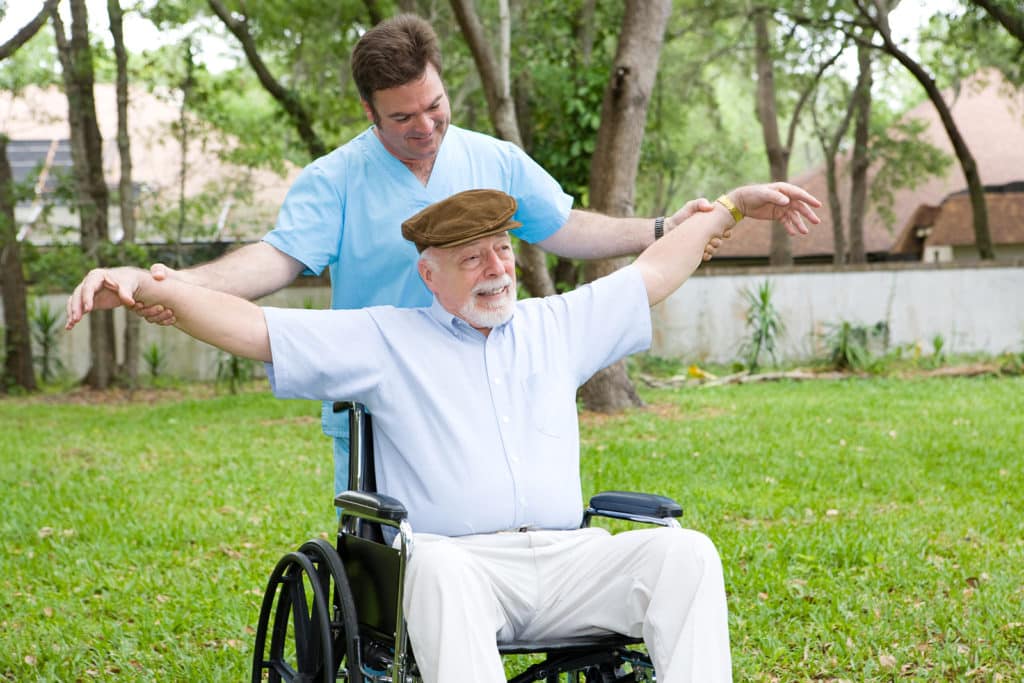Experts at the Mayo Clinic recommend that people who are aged 65 or older be screened for a condition called peripheral artery disease (PAD). It is a problem with circulation that decreases blood flow to the arms and legs. It’s an uncomfortable and even painful disease that can make completing daily activities difficult or even impossible.

About PAD
When a person has PAD, their arteries are narrow, which is what reduces blood supply. It most commonly affects the legs. PAD is often caused by a bigger problem with arteries, namely atherosclerosis. Atherosclerosis is caused by fatty substances building up on the walls of arteries, forming plaques. Typically, you hear about atherosclerosis in relation to the heart, but it can cause narrow arteries in any area of the body.
There are several things that can increase an older adult’s risk of having PAD, including:
- Age
- Obesity
- Diabetes
- Smoking
- High cholesterol
- High blood pressure
- Family history of PAD, stroke, or heart disease
- People who smoke or who have diabetes have the highest risk of getting PAD because both of these things affect circulation.
PAD Symptoms
PAD sometimes only causes mild symptoms, but it can also cause claudication. Claudication is a pain in the legs that occurs when the person is active. The pain usually goes away after resting for a bit. The pain can be so bad that it is debilitating. The senior may experience painful cramping in their hips, calves, or thighs during walking.
Other symptoms of PAD include:
- Numbness or weakness in the legs
- Lower legs or feet that feel cold, especially in comparison to the other leg
- Sores that don’t heal on the legs, toes, or feet
- A change in the coloration of the legs
- Losing hair on the legs or feet
- Slowed toenail growth
- Skin on the legs that looks shiny
- Having a weak pulse or no pulse in the lower legs or feet
If PAD is not treated, it can progress and cause pain to occur even when the older adult isn’t active, which may cause sleep disturbances. If your aging relative is complaining of pain or odd sensations in their legs or arms, they should see a doctor.
Elder care providers can assist people who suffer from PAD. Doctors typically recommend making lifestyle changes that reduce symptoms, such as exercise and a healthy diet. Treatment may also involve medications. Elderly care providers can remind your aging relative when it is time to take their medication, preventing a missed dose. Elderly care providers can also cook heart-healthy meals that reduce saturated fats and help to control blood pressure, cholesterol, and blood sugar.
If you or an aging loved-one are considering hiring a Caregiver in Surprise, AZ, please contact the caring staff at Blessings for Seniors Companion Care at (623) 594-0819
Sources
Medicalnewstoday.com
Mayoclinic.org/symptoms-causes
Heart.org
Mayoclinic.org/diagnosis-treatment
Blessings for Seniors makes it possible for older adults to enjoy the comforts of their own home for as long as possible. We offer a customized care plan that includes services such as; Hourly Senior Home Care, 24-Hour Home Care, Dementia Care, Personal Care and Companion Care. Also ask us about our Veterans’ Home Care program.
- What Does a Personal Hygiene Plan Look Like for Aging Adults? - May 19, 2025
- Managing Routines to Manage Health - May 8, 2025
- The Benefits Of 24-Home Care For Seniors - April 23, 2025


